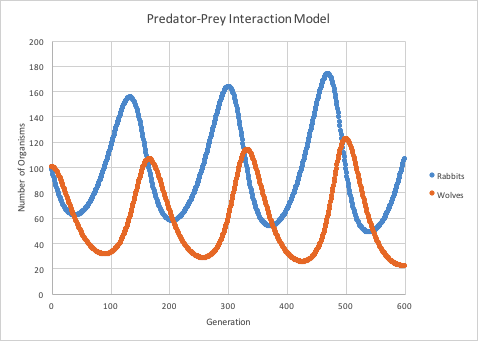Interspecific Interactions in Communities and Keystone Species
1/21
There's no tags or description
Looks like no tags are added yet.
Name | Mastery | Learn | Test | Matching | Spaced |
|---|
No study sessions yet.
22 Terms
types of interspecific interactive relationships
predator-prey
parasite-host
interspecific competition for resources
presence of predators helps control prey populations
get rid of the genetically unfit and old
density - dependent or independent
density-dependent - larger and more crowded populations are more vulnerable
more individuals are grouped together, making them an easier and more noticeable target for predators
less hiding spots
Predator-prey relationships
crash in prey population
predator population crashes - no food
no predators - prey population increases
predators population now increases as food is abundant
predators increase and the prey population crashes
cycle continues

why are the two populations out of sync
it takes some time for the effects of one population to be felt by another population
why are there less predator then prey
because a predator feeds on more then one prey due to being at a higher trophic level and only 10% of the energy being transferred from one to the other.
Prey animals often reproduce more quickly than predators
how could these predator prey relationships vary in the wild
predators may have different prey species so they wouldnt die out when one of their prey sources did.
density dependent factors such as overgrazing, disease arent taken into consideration
how do parasites work
attack and weaken their designated host species
make them more vulnerable to disease/predators and increase mortality rate
parasites; density-dependent/independent
density dependent because in crowded populations parasites can more easily spread
conventional parasites
feeds off organism internally or externally p
parasitoids
kill their prey
only if the host has fed the parasite well enough
parasitic castrators
effect reproductive potential of their prey
brood parasites and mimics
name an example of
conventional parasite
internal parasite
external parasite
parasitoid
parasitic castrator
brood parasite
tapeworm, mosquito
tapeworm, athlete’s foot, ringworm
tick
wasp
bee’s orchid
cuckoo
Coevolution
predator and prey kill the least genetically fit of prey
only the fittest survive to reproduce, meaning each generation gets fitter and fitter
predators and parasites also get better and better at catching the prey
‘arms race develops’
list different strategies or adaptations evolved by predators to capture and subdue prey
venom, small predators can subdue larger prey then theym
pursuit
pack hunting
ambush
list different adaptations evolved by prey to avoid or deter predators
poison, bad taste
armor/spines
diversion tactics
camouflage
fear factor (Making urself larger than you acc are)
safety in herds
list different adaptations evolved by plants to deter grazing
toxins
spines
aromatic herbs
height
tougher tissues
keystone species
population with a disproportionality large effect on the community as its presence maintains a high biodiversity
how do keystone species maintain a high biodiversity
controlling dominant species in the community
providing critical resources needed by several species
what happens if the keystone species dissapears
massive plummet in biodiversity
not all communities have a keystone species but if they do it is important to maintain that
critical to env health and community stability
example of keystone species
Ochre sea star - preys on mussels
if removed mussels take over and biodiversity decreases from 25 species to about 2 or 3
sea otters and sea urchin
grey wolves in greater Yellowstone ecosystem
why is the study of keystone species important in biodiversity conservation projects
if you mistake the keystone species you could destroy an ecosystem